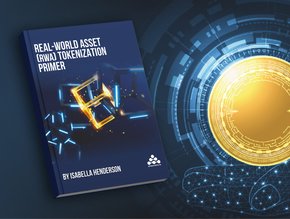How to implement Virtual Account Management (VAM)

To say that modern banking processes are ‘complicated’ is an understatement, and the larger or more dispersed a company’s network of cash deposits becomes the problem is exacerbated further. With corporate account architectures soon spiralling into costly and time-consuming labyrinths that necessarily grapple with separate liquidity and regulatory requirements, which are also sometimes managed inefficiently by outdated manual means, it’s clear that the traditional approach to account management isn’t working.
As usual, digital technology has provided the answer: Virtual Account Management (VAM). Simplified, VAM works by allocating transactions within a ‘master’ physical account into several virtual subledgers. The effect is a significantly more comprehensible method for tracking finances in an integrated, seamless and holistic manner, yet also with a firm degree of granular oversight and control over each subledger or ‘virtual account’. This in turn can unlock:
- Greater access to funds
- More accurate cash forecasting
- Liquidity optimisation
- Lower cost-of-funding
To learn more about the transformative potential of VAM for banking, we spoke with Conor Colleary, Group Vice President of Oracle Financial Services. Working directly with global financial institutions, Colleary helps them develop solutions to maximise their use of data in the digital economy. His résumé also includes prior executive positions at Misys and Thomson Reuters, making him ideally placed to answer our five questions on VAM.
Special thanks also go to Vipul Pal, Principal at Deloitte Consulting, for his added contributions to our research on this subject.
FinTech’s five questions
FinTech Magazine: Before an organisation decides to implement VAM, what considerations should it take into account?
Conor Colleary: Historically, VAM has been a solution for large corporates who have complex structures of physical bank accounts spread across the globe. With growing globalisation, organisations that can benefit from this technology are no longer defined by their size, but by complexity and the breadth of their business. This might include companies handling payments and collections in various currencies or managing funds for new-economy platforms like gig workers and service providers.
FinTech Magazine: What do you consider VAM’s main value proposition?
Conor Colleary: Banks have started to realise that the traditional VAM techniques of virtual IBANs and reference numbers only address a small portion of corporate challenges relating to receivables management support. The second generation of VAM solutions we are seeing in the market supports the deployment of a wide range of banking services that help corporate customers easily access their cash positions and manage working capital at any time.
For instance, today’s solutions can address additional business propositions for payables and receivables management, in-house banking, and client money management with self-service capabilities. In addition, corporates are looking to combine traditional liquidity management with virtual accounts. This will allow them to build off physical sweeping (including relationships across multiple banks) with real-time cash concentration (via virtual accounts) into hybrid physical and virtual structures.
FinTech Magazine: Which technologies enable Oracles’ own VAM solutions?
Conor Colleary: Built on Oracle Cloud Infrastructure (OCI) and an adaptable microservices architecture, Oracle Virtual Account Management Cloud Service empowers banks to offer better transaction services, including:
- Efficient liquidity management
- Managing receivables and payables in real-time
- In-house banking, and
- Client money management.
Since corporate clients’ cash flow priorities are constantly changing in the unpredictable global financial environment, these services are critical.
Oracle’s modern, componentized solutions allow banks to choose the features that address their precise needs, with both tactical options for faster time-to-market and strategic options for the longer term. When paired with the Oracle Banking Digital Experience, Oracle’s VAM provides clients with self-service capabilities so they can perform the same actions as a banker, such as independently managing liquidity structures, making transactions, and forecasting cash flow.
Furthermore, our product is flexible and system-agnostic: capable of integrating with any core banking and payment systems that the bank uses. The cloud VAM solution also ensures high levels of system availability, scalability, performance, and data security.
FinTech Magazine: How would you characterize the challenges of implementing VAM?
Conor Colleary: As with any financial services project, the integration of a new solution can be complicated. This is particularly true here because VAM interacts with so many areas of a bank, therefore it requires many touchpoints with the bank’s systems. Oracle’s goal has been to follow standard integration models and use industry standard data exchange based on ISO20022 to help ease the integration challenge.
FinTech Magazine: Describe the effect that VAM could have on the broader banking industry.
Conor Colleary: With VAM, corporates stand to reduce cost and complexity and introduce new levels of automation through the alignment of their banking accounts and internal accounting systems. They also benefit from real-time visibility and control of their working capital. Many also centralise their non-core business from subsidiaries to shared service centres and global treasury operations.
Banks, in turn, can strengthen customer relationships and generate new revenue streams by offering new services that address corporate customers’ pain points while reducing their own operational costs.
Deloitte’s practical guide for adopting VAM
Prior to implementing virtual accounts, Deloitte recommends a four-fold strategy to manage variables and expectations for a highly powerful tool:
- Assess your objectives thoroughly before beginning
- Determine the optimal configuration for virtual account structures
- Similarly, virtual account identifier for the organisation must be appropriate
- Discuss integration into TMS/ERP (treasury management systems and enterprise resource planning)
Vipul Pal adds, “Banks should understand the implications of all aspects of a VAM environment as part of their implementation roadmap and how VAM can enhance their product offering in the market. For example, banks simply looking to use VAM to simplify their internal cash reconciliation operations should also consider extending VAM as a new product/service offering to clients as a means to attract greater deposit balances.”
Vipul Pal on the transformative impact of VAM
“While VAM has been around for a number of years and adopted in the transaction banking sector, the broader application of virtual accounts across global banks could enable buy-side firms to better manage cash positions in a multi-bank environment. It could also provide improved transparency and controls around client segregated cash and expand capabilities in capital markets functions such as collateral management.”






